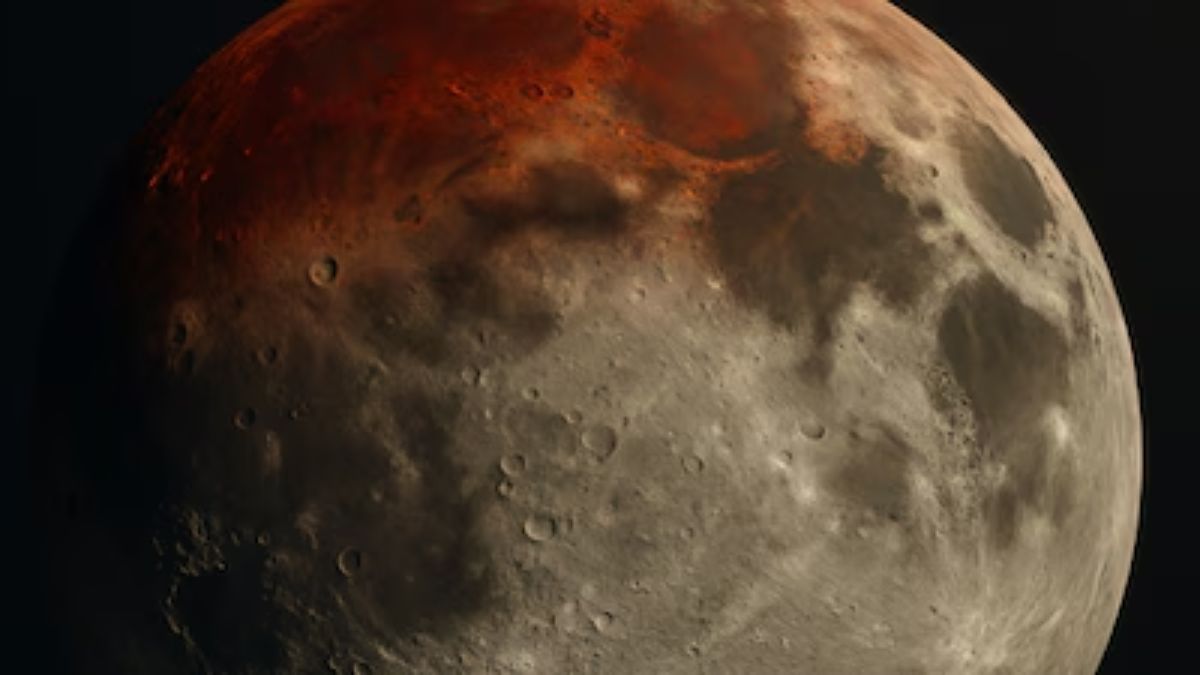What is happening to the Moon? It is turning rusty, and Earth seems to be the reason.
Scientists say our planet’s atmosphere may be responsible for the Moon’s rust.
They have found hematite, a type of iron oxide better known as rust, on the Moon’s surface.
So the question is, why is the Moon rusting? And how is Earth making it happen?
Let’s find out:
Why the Moon is rusting
Rust forms when iron comes into contact with water and oxygen.
Researchers have discovered hematite, a type of iron oxide also known as rust, on the Moon’s surface, especially near its poles.
Scientists were puzzled to see signs of rusting, since the process usually needs oxygen and water, both of which are scarce on the Moon.
According to a report in Nature, Ziliang Jin, a planetary scientist at Macau University of Science and Technology in China, said the findings reveal more about the close link between Earth and the Moon.
Ziliang and his team shared their results earlier this month in Geophysical Research Letters.
In 2020, scientists confirmed that India’s Chandrayaan-1 mission had detected hematite near the Moon’s poles.
What did Chandrayaan-1 discover? And what exactly is hematite?
Launched in 2008, India’s lunar probe circled the Moon and collected data that led to many discoveries over time, including evidence of water molecules on its surface.
When researchers at Nasa and the Hawai’i Institute of Geophysics and Planetology recently studied the data, they were surprised to see signs of hematite, a form of iron oxide or rust.
The Moon has plenty of iron-rich rocks, but rust can only form when iron is exposed to both oxygen and water.
Hematite itself is an iron-rich mineral created when rocks react with water and oxygen.
Impact Shorts
More ShortsThe authors of the 2020 study suggested that oxygen may have reached the Moon through the Earth wind.
Is Earth to blame? Why?
Scientists think the Moon is rusting because of its interaction with Earth’s magnetic tail.
This tail is made of particles first trapped by Earth’s magnetic field and then pushed out by the solar wind.
For about six days in every 28-day lunar cycle, around the time of the full Moon, the Moon passes through this magnetic tail.
During those days, some oxygen molecules from Earth may travel to the Moon.
This explains the source of oxygen, but rust also needs water.
Water does exist on the Moon, though only as ice at the poles. Researchers believe the hematite may have formed in those polar regions and later spread across the surface by some unknown process.
Normally, charged particles from the Sun hit both Earth and the Moon. But for about five days each month, when Earth blocks the Sun, the solar particles are cut off.
At that time, the Moon is mainly exposed to particles from Earth’s atmosphere, known as Earth wind.
According to Sky At Night Magazine, Earth’s magnetotail shields the Moon from solar winds, lowering their impact and making oxidation possible during certain phases.
Ziliang and his team tested this idea in the laboratory using a simulation of Earth wind.
They fired hydrogen and oxygen ions at high speeds into iron-rich mineral crystals, the type found on the Moon.
Some crystals turned into haematite when hit with oxygen ions. But when hydrogen ions struck the haematite, some of it changed back into iron.
)